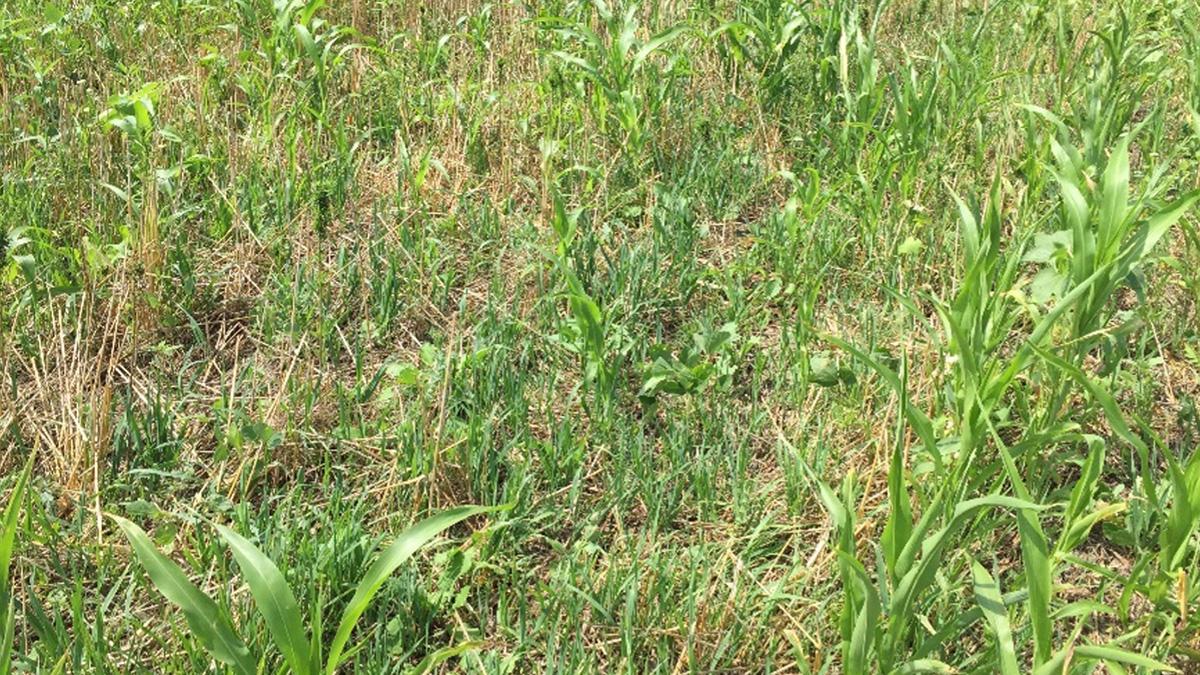Jay Parsons.
Webinar
Tips for Making Annual Forages Work for You
June 9, 2022, noon CT
With a majority of Nebraska range and pasture in poor or very poor condition to start off the grazing season, many cattle producers are considering the availability of alternate forage resources. Annual forages planted on cropland offers a potentially valuable feed resource while fulfilling crop rotation needs. Planting dates, seeding mix, and expected forage production will be discussed for various scenarios with a focus on conditions this year. Grazing and timing of forage availability will also be discussed along with options for obtaining crop insurance through the annual forage insurance plan.
RegisterIn the latest USDA Nebraska Crop Progress and Conditions report, Nebraska pasture and range conditions rated 16% very poor, 23% poor, 34% fair, 26% good, and 1% excellent. With concerns mounting about having enough forage available to carry cattle through the grazing season and simultaneous difficulty acquiring affordable inputs for row crop production, some Nebraska producers are considering planting annual forages on cropland this year. Planting annual forages specifically for feed can provide a number of benefits beyond feed value, including ground cover and soil health benefits. One of the main risks with this production practice, especially in a non-irrigated field, is variable precipitation and soil moisture conditions.
Annual Forage Insurance Plan
The Annual Forage Insurance Plan, available in Nebraska from the USDA Risk Management Agency (RMA), is available to crop and livestock producers to help mitigate precipitation risk when growing annual forages. Coverage is available for any annual forages seeded for use as livestock feed or fodder. This includes annual forage plants seeded for grazing, haying, grazing and haying, grazing and grain production, green chop, grazing and green chop, or silage.
The Annual Forage Insurance Plan includes four growing seasons that cover the entire year.
• Growing Season 1, Planting Dates: Jul 16 – Oct 15, Rainfall coverage available from Sep 1 - Mar 31
• Growing Season 2, Planting Dates: Oct 16 – Jan 15, Rainfall coverage available from Dec 1 - Jun 30
• Growing Season 3, Planting Dates: Jan 16 – Apr 15, Rainfall coverage available from Mar 1 - Sep 30
• Growing Season 4, Planting Dates: Apr 16 – Jul 15, Rainfall coverage available from June 1 - Nov 30
The sign-up deadline for all of these growing seasons is July 15 each year.
The Annual Forage Insurance Plan coverage is based off of precipitation index data provided by the National Oceanic and Atmospheric Administration Climate Prediction Center (NOAA CPC). Producers can insure from 70% to 90% of the Expected Grid Index precipitation across a series of two-month intervals spanning the coverage period for each growing season. Both irrigated and non-irrigated acres are insurable. Premium costs are subsidized from 51% to 59% depending upon coverage level selection. The Annual Forage Insurance Plan functions very similar to Pasture, Rangeland, Forage (PRF) insurance, but it is for annual forages instead of perennial forage and coverage is attached to specific growing seasons as outlined above.
Some Final Thoughts
For producers considering utilizing the Annual Forage Insurance Plan, one of the greatest challenges is the timing of the sign-up period for purchasing the insurance. The deadline for buying the insurance is July 15 for the next crop year, which runs from July 16, 2022 to July 15, 2023. Many producers considering planting annual forages will often not have specific annual forage planting plans identified that carry through to the middle of next year. However, like many crop insurance plans, acreage reporting after planting is the process by which coverage is finally established. Sign-up for annual forage insurance only involves selecting coverage levels and the two-month intervals upon which you would like the precipitation coverage to apply. However, sign-up is a necessary step to complete by July 15 if the option is desired to attach precipitation insurance coverage to any annual forage acres planted between July 16, 2022 and July 15, 2023.
Producers interested in using the Annual Forage Insurance Plan are encouraged to contact their local crop insurance agent and visit https://www.rma.usda.gov/Policy-and-Procedure/Insurance-Plans/Annual-Forage to access more information, including a grid locator, decision support tool, and all of the historical rainfall indices. A webinar explaining the insurance is available at: https://cap.unl.edu/forage/insurance-tools-managing-forage-production-risk-july-2-2020-webinar.
This material is based upon work supported by USDA/NIFA under Award Number 2018-70027-28586.


